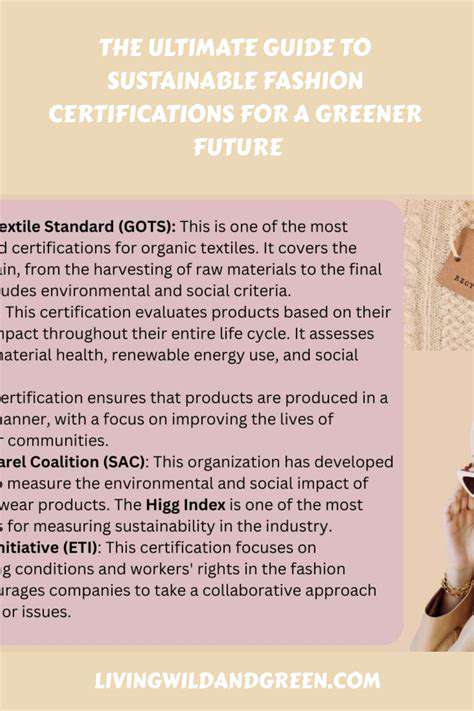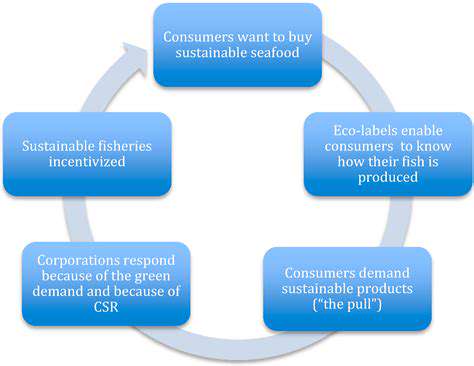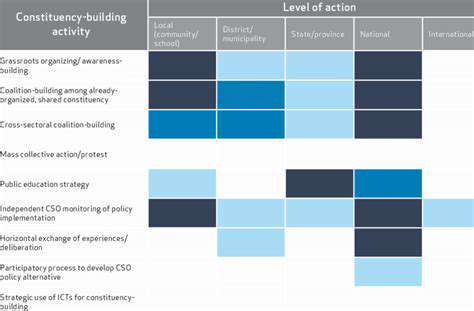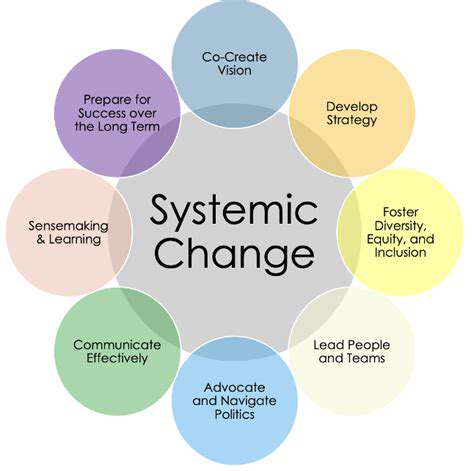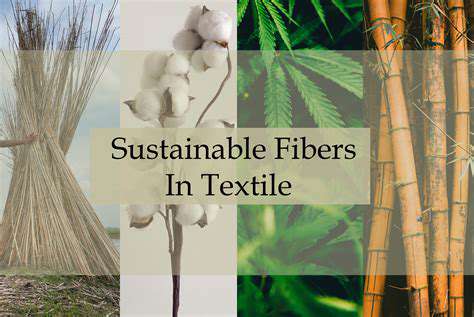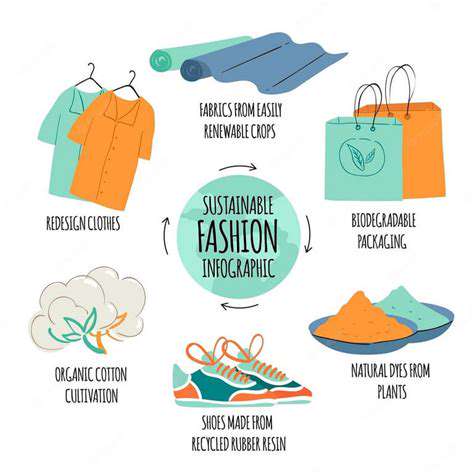Sustainable Fashion Certifications: A Comprehensive Review
Key Certifications and Their Criteria
GOTS (Global Organic Textile Standard)
The Global Organic Textile Standard (GOTS) is a globally recognized certification that ensures organic and sustainable practices throughout the entire textile supply chain. It covers everything from the cultivation of organic cotton to the manufacturing and processing of the final product. GOTS goes beyond simply using organic materials; it also addresses social and environmental concerns, including fair labor practices, water conservation, and chemical restrictions. This comprehensive approach makes GOTS a highly sought-after certification for consumers seeking truly sustainable fashion.
GOTS certification requires rigorous auditing and verification at each stage of production. This thorough process helps to ensure that the products meet the standard's high ethical and environmental criteria. The certification also promotes transparency within the fashion industry by providing consumers with detailed information about the origins and production methods of the clothing they purchase.
OEKO-TEX Standard 100
OEKO-TEX Standard 100 is a globally recognized certification that focuses on the safety of textile products. It assesses the presence of harmful chemicals and substances in fabrics, ensuring that they are safe for human contact. This certification is crucial for consumer well-being, especially for those with sensitive skin or allergies. It helps to guarantee that the products are free from harmful substances like formaldehyde, pesticides, and heavy metals.
The certification process involves rigorous testing and analysis of the materials used in the garments. Manufacturers must demonstrate compliance with the standard's strict regulations to achieve certification. This assurance of safety helps consumers make informed choices about the products they purchase, knowing that they are not exposing themselves to potentially harmful chemicals.
Fair Trade Certification
Fair Trade certification ensures that producers in developing countries receive fair prices for their goods, enabling them to earn a living wage and improve their working conditions. This certification promotes ethical labor practices and empowers marginalized communities within the textile industry. It encourages sustainable farming and production practices by supporting fair compensation for the people who cultivate and produce the raw materials.
The certification process involves a thorough assessment of the working conditions and compensation of the workers. Fair Trade certification not only supports the livelihoods of producers but also fosters a more equitable and sustainable supply chain. It is an important consideration for consumers who want to support ethical and responsible fashion practices.
WRAP (Worldwide Responsible Accredited Production)
WRAP (Worldwide Responsible Accredited Production) is a certification program that focuses on social and environmental responsibility throughout the manufacturing process. WRAP addresses issues like worker safety, fair wages, and environmental protection. It covers a broad range of ethical and sustainable practices, helping to ensure that the products are created in a responsible manner.
WRAP certification mandates regular audits and assessments to ensure ongoing compliance with its standards. This ongoing monitoring helps to maintain high standards and promote continuous improvement in factory practices. This certification is valuable for consumers who want to support clothing manufacturers that prioritize a safe and sustainable work environment.
B Corp Certification
B Corp certification is a rigorous assessment of a company's social and environmental performance. It goes beyond just environmental concerns and also includes considerations for fair labor practices, community engagement, and governance. This holistic approach ensures that the company operates with a strong commitment to sustainability in all its aspects.
B Corp certification involves a third-party audit to assess a company's impact on society and the environment. This certification is significant because it demonstrates that a company is not just focused on profit but also on creating positive change. It's an important consideration for consumers who want to support companies committed to a more sustainable and responsible approach.
BLUESIGN
Bluesign is a certification that focuses on the environmental impact of textile production. It aims to minimize the use of harmful chemicals and reduce the environmental footprint of textile manufacturing. By adhering to strict chemical restrictions and promoting innovative production processes, Bluesign helps to create a more sustainable textile industry.
The certification process involves rigorous testing and monitoring of chemicals and materials used in textile production. Bluesign certification is a valuable resource for consumers who prioritize environmental sustainability in their fashion choices. It helps to ensure that the products are made with minimal environmental impact.
GOTS (Global Organic Textile Standard)
The Global Organic Textile Standard (GOTS) is a globally recognized certification that ensures organic and sustainable practices throughout the entire textile supply chain. It covers everything from the cultivation of organic cotton to the manufacturing and processing of the final product. GOTS goes beyond simply using organic materials; it also addresses social and environmental concerns, including fair labor practices, water conservation, and chemical restrictions. This comprehensive approach makes GOTS a highly sought-after certification for consumers seeking truly sustainable fashion.
Evaluating the Effectiveness and Limitations of Certifications
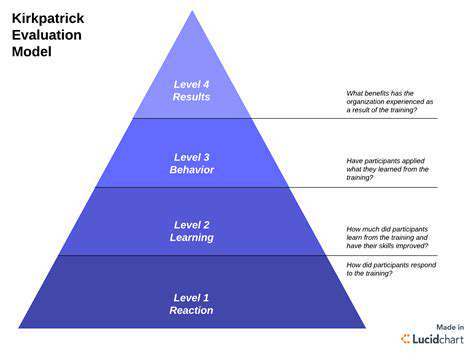
Evaluating the Effectiveness of Learning Technologies
Learning technologies are rapidly evolving, offering a wide array of tools and platforms to enhance educational experiences. Assessing the effectiveness of these technologies is crucial to ensure they are meeting the needs of learners and contributing meaningfully to the educational process. A thorough evaluation considers not only the technical aspects of the software or platform but also the impact on student engagement, knowledge retention, and overall learning outcomes.
Factors Influencing Effectiveness
Several factors play a pivotal role in determining the effectiveness of learning technologies. These include the design and pedagogical approach underpinning the technology, the specific learning objectives it aims to address, and the context in which it's implemented. Furthermore, the quality of teacher training and support for integrating the technology into the curriculum are essential elements for successful implementation.
The learner's prior knowledge and motivation also significantly impact the effectiveness of the technology. A well-designed learning experience accounts for these individual differences.
Measuring Learning Outcomes
Evaluating learning outcomes is a critical component of assessing the effectiveness of learning technologies. This involves using various methods to measure student achievement, such as standardized tests, quizzes, projects, and performance-based assessments. Qualitative data like observations, feedback, and student reflections are also valuable for understanding the impact of the technology on learning experiences. These data points provide a comprehensive understanding of the learning process and the effectiveness of the implemented technology.
Considerations for Different Learning Styles
Learning technologies should be adaptable to accommodate diverse learning styles. A single technology may not be equally effective for all learners. Different learning styles require different approaches to engagement and interaction, and an effective solution will cater to those needs. For example, visual learners might benefit from interactive simulations, while kinesthetic learners might thrive in hands-on activities integrated into the learning platform. By considering individual differences in learning styles, educators can optimize the effectiveness of the technology for all learners.
Impact on Teacher Roles and Responsibilities
The implementation of learning technologies often necessitates a shift in teacher roles and responsibilities. Teachers become facilitators and mentors, guiding students through the learning process rather than being the sole source of information. This transition requires ongoing professional development and support for teachers to effectively integrate these technologies into their instruction. It also requires a shift in mindset, moving away from traditional teaching methods to more student-centered approaches. This adaptation can be challenging, but the rewards of improved learning outcomes are substantial.
Ethical Implications and Accessibility
The use of learning technologies raises important ethical considerations, particularly regarding data privacy and security. Ensuring that learning platforms are designed and implemented with respect for ethical principles is crucial to responsible technology use. Additionally, the accessibility of learning technologies for learners with disabilities needs careful consideration. Inclusive design principles should be incorporated to ensure that all students have equal access to and benefit from the learning resources.
